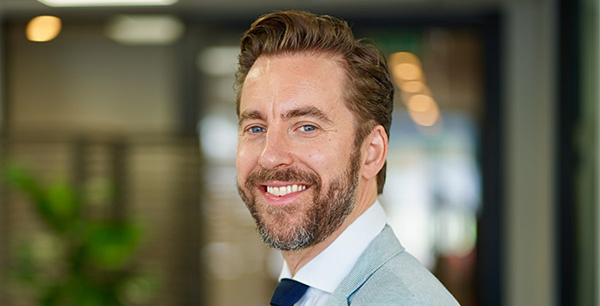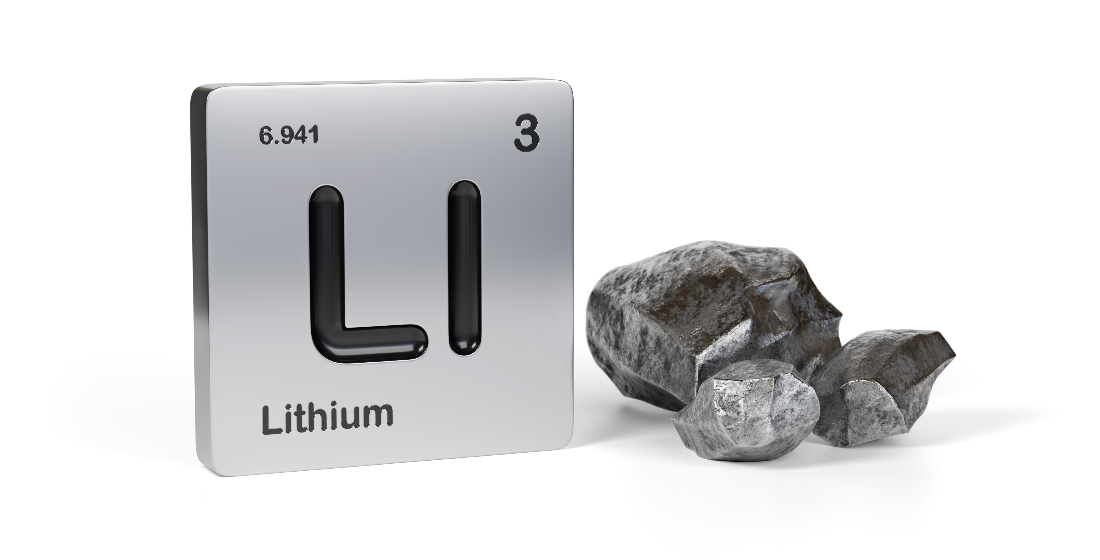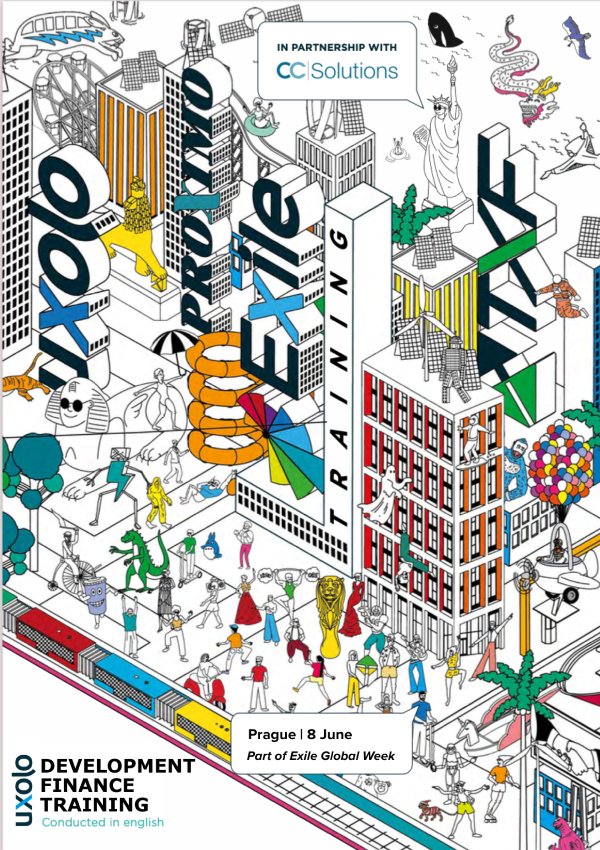Bigger and bolder: Inside Climate Investor 2
Following the $675 million first close of CI2, Uxolo caught up with Climate Fund Managers’ George Beukering to find how the new blended finance investment vehicle has evolved from its ground-breaking predecessor.

Last month, Climate Fund Managers reached a $675 million first close on Climate Investor 2 (CI2): a climate-focused, blended finance investment vehicle following in the footsteps of CFM’s flagship $850 million Climate Investor One (CI1). With a $1 billion target fund size, CI2 will provide expertise, technology, and financing to climate-related infrastructure projects in emerging markets by mobilising private sector financing at scale, supported by catalytic public sector donor funding. Building on CI1’s focus on renewable energy, CFM has added water, sanitation, and oceans infrastructure to CI2’s investment mandate.
Bolstered by strong support from the government of the Netherlands, CI2 uses the same blended finance structure as CI1, which aims to simplify and expedite the manner in which capital is deployed by providing a single financing source for each of the respective development, construction, and operational phases of a project’s lifecycle. Through its CI2 Development Fund, CI2 will provide early-stage project development services and financing; and through its CI2 Construction Equity Fund, CI2 will offer equity finance that accelerates project construction.
After the success of Climate Investor One, what were your main targets for CI2?
The two main ambitions that we had were to, firstly, contribute to the fight against climate change, and to do it quickly and at scale because we only have eight years left to lock in 1.5 degrees. And secondly, we wanted to attract the private sector, because that’s where the real budgets are – we need trillions of dollars to keep within a 1.5 degrees increase and we only have $150 billion annually of official development aid, and that’s why we’re using blended finance.
Who invested in the CI2, and what were the different levels of funding commitments?
The four investor groups were as follows:
1) Donors: The European Commission; the government of the Netherlands, through the Dutch Fund for Climate and Development; and The Nordic Development Fund.
2) The private sector: KLP, the largest pension fund in Norway; IMAS Foundation (which is linked to IKEA); Sanlam, the largest insurance company in Africa; the Dutch insurer Aegon; and the Dutch public sector bank BNG Bank.
3) Development finance institutions: the Dutch development bank FMO.
4) Export credit agencies: Atradius, the Dutch ECA.
The individual funding commitments are confidential, but they range from $15 million to $300 million. The average commitment would be between $50 million and $75 million.
Can you elaborate on how CI2 is structured?
CI2 is made up of two funds. Firstly, there’s the Development Fund, which is there to prepare projects during the development stage. The development stage has higher perceived risk and low capital-intensity. There’s all kinds of ideas and nice locations but many projects never reach the finish line. The process often takes years and there are very few parties out there willing to finance it, and we’re one of them.
Then there’s the Construction Equity Fund. Here we have the follow-on financing once a project has been successfully made ‘bankable’. We provide construction finance to take the project through the construction phase – usually with equity only because we found that project finance, while a proven methodology to finance projects, is very cumbersome and takes a lot of time, so we decided to only bring in the banks in the third and final stage, the operational phase. So we tend to equity finance our construction with shareholder funding only, and then bring in the needed leverage in the operational stage. This fund also comprises three tranches – called Tier 1, Tier 2 and Tier 3 – and each of those four investor groups are invested in one of them. The Tier 1 is for the donors, who also invest in the Development Fund.
We’re not buying old investments, we’re looking to develop rather than to refinance. And refinancing refers to the debt financing that we’ll then provide to our project companies during the operational stage. And then the fourth milestone is the exit. And all of that, we’re looking to do within six to eight years.
What are the different returns for the investors?
I can’t go into too much detail but what I can say is that the donors are looking for their capital back plus a little bit more. The commercial investors are looking for a return that’s commensurate to the risk that they’re bearing in emerging markets in Africa and Asia, but the risk profile has been improved because there’s donor funding available, so that reduces the risk and therefore their return expectations – but it’s what they would expect for illiquid infrastructure in the developing countries. And then the Tier 3 investors are enjoying the guarantee from the export credit agency and they have a cap return.
Cl1 focused on renewable energy in emerging markets. Why did you expand the remit to focus specifically on water, sanitation, and oceans infrastructure in CI2?
The CI1 was all renewable energy, and when we brought that platform to market in 2015, the sector was still sort of a novelty in emerging markets. We weren’t the first ones obviously but we were relatively new, especially for the private sector in OECD countries. Now that’s absolutely no longer the case: renewable energy in emerging markets is now a fully recognised and existing asset class.
And that’s a pure focus on climate change mitigation: you’re trying to reduce greenhouse gases as much as possible. Thinking of our second platform, we wanted to, firstly, double down on greenhouse gas emissions reductions. But we also wanted to recognise that climate change is here to stay and the most vulnerable countries are likely to suffer the most, so we decided to bring in an element of climate change adaptation into our second platform. The third element we wanted to recognise in CI2 was the biodiversity crisis.
So what does that mean? Well, adaptation is water. There’s too much water in some places, like The Netherlands, and too little water in other places. So we’re there to help provide industrial and municipal water to places that are subject to increased climate pressure. So that’s the adaptation element.
The mitigation element is there in respect to waste. Municipal waste, industrial waste and wastewater are phenomenal problems in emerging markets. As they decompose, waste and wastewater produce substantial amounts of methane and jointly generate an estimated 7% of all greenhouse gas emissions, four times more than global aviation. Landfills are a phenomenal problem for several reasons: the methane, and also the leachate that’s going into connected aquifers; and there are also huge social problems because there’s lots of waste-pickers and so on trying to find valuables in that waste. So in Europe and the US, landfilling is no longer permitted, for those reasons, and now we’re trying to go toward recycling and re-use, but intermittently there’s waste incineration. Incineration is sub-optimal, we all know that, but if you’re coming from a place in say Africa or Asia, where a lot of waste is just dumped into the street or a river, then incineration is an intermediary step to get to recycling, upcycling and re-use.
The third pillar is oceans, and that’s where the biodiversity element comes in. Essentially what we’re doing with the oceans is taking the fish out and replacing them with plastics. By 2050, it’s expected that there will be more kilograms of plastic in the oceans than actual natural life, so we need to address that pollution as it’s destroying our ecosystems. Also oceans capture our heat and eventually begin to release it, and we’re likely to see a lot of that heat captured since the 1980s released in the coming years – so fasten your seatbelts! The oceans are also quite a big economy, similar to the size of the UK economy, and we need to preserve its health. So we’re looking to fund business models and nature-based solutions in order to restore the oceans’ health and increase their capacity to store carbon.
We’re also looking to fund green transport, which is a mitigation issue, and we’re looking to invest in ports to reduce waste and wastewater and to electrify them with renewable power, because there’s a lot of fossil fuels being used in ports. Additionally, we’re interested in nature-based solutions around oceans, such as mangroves forests to protect coastlines from rising sea levels.
As well as financing, CI2 will provide expertise and technology: can you expand on the support you will be providing?
The failure rate during the development stage is very high, because there’s not always the expertise available locally to look at the various different components of a project; whether it’s legal, financial, KYC, AML, ESG, or technological. So we have our own teams at CFM that are ESG specialists and engineers, etc, that are looking at projects from different perspectives, because investors won’t stand for any kind of reputational risk there, and often projects need help on the technological side.
Your stated aim is to eventually raise a total of $1 billion for CI2. How confident are you of hitting that mark?
It’s absolutely going to happen, I’ve no doubt about it. And that’s because of the urgency we saw created in Glasgow – climate action is now not just a fashionable thing, it’s here to stay and it’s going to get bigger and bigger. Just look at that declaration by $130 trillion worth of the private sector committing to net zero. There are no green assets in that $130 trillion and some managers are trying to label what they already do as green when in fact it’s just mainstream business. But our two platforms are actually green, created specifically to counter the effects of climate change, so there’s a lot of interest in what we’re doing. We also have two years to reach that total, which is quite a long period.
What element are you most proud of in CI2’s first close?
Until recently, CI1 was the largest emerging markets-focused renewable energy fund. And the structure was very innovative: we received a prize for it from the Global Innovation Lab for Climate Finance, and it was widely praised and case-studied. CI2 is exactly the same structure as CI1, but it’s still highly innovative: people still don’t have access to both a Development Fund and a Construction Equity Fund or equivalent.
I also don’t see any other funds out there of the same size that are funded through blended finance. And I’m absolutely convinced that there are no other funds our size in the emerging markets that have raised so much money for waste and water, because it’s generally considered too difficult. Well, we’re here to do difficult stuff, because the problems are huge. There are other funds out there that include water in the very broad mix of the the things they cover, but a water and waste focused fund for $1 billion is really quite unique, and that’s why our investors had to do a lot of due diligence to convince themselves that we could actually deploy a billion dollars into this space. And the reason they have confidence in us is that we can build our own pipeline – we don’t have to wait around for others to develop, we do it ourselves with our partners.
If you have a 20-year fund, you’re also not in what we Dutch call a “blood rush”. So if you’re looking at the usual 10-year fund structure for private equity, you need to deploy your money very quickly in five years and then rush out again. That’s the typical five plus five structure. We have 20 years. That doesn’t mean we are going to be lazy and sit around, because we’re expecting to do more in more cycles, but it means we don’t have to rush the process.
What lessons have you learned from CI1 that you’ve applied to CI2?
We initially wanted equity finance our projects during construction only, because it speeds things up, but we learned through CI1 that there are projects out there that already have lending available or prefer the traditional project finance approach. So now it’s an option but not a requirement: we can do it with equity only but we can also bring in debt during construction.
And what we also found is that investors are finding it tough to invest in a 20-year platform, so we’ve made a structure for a slightly earlier exit – we found a solution to provide comfort to those investors reluctant to go the full 20 years.
Blended finance has been a hot topic for a few years now, but often with limited deals to back up the talk. Do you think CI2 will help that?
For me, the blended finance lag has nothing to do with the lack of pipeline. Blended finance is often used as a tool in emerging markets, and that’s where the economic growth and the population growth is taking place and where there is such a direct need for all kinds of infrastructure etc. So the fact there's a lack of deal flow makes no sense at all, it’s just not true. What is true is that investors from the West are just not willing to fund the deals. And the reason for that is that there’s usually a lack of “quality” deals, because the perceived risk-return profile is not what the investors would like – but that perception comes from the fact that they don’t understand the local situation. Blended finance is a tool to bridge that gap: it reduces risks for commercial investors and then hands them their return.
I’m not sure that blended finance as an industry is where people would’ve wanted it to be today, considering how promising an area it is. The reason for that is that it’s very complex to bring the private and the public sector together, because what usually happens is that everyone comes with their own wishlist: the donors want A, B and C; and the private sector wants D, E and F. What I think we’ve successfully been able to do is to find a way to keep everyone happy, which is very complex and time-consuming. We’ve been able to negotiate that with our partners here in The Netherlands in order to offer a relatively simple product on the ground, because it’s better to take time to sort those potential conflicts beforehand rather than further down the line in more complex jurisdictions.





